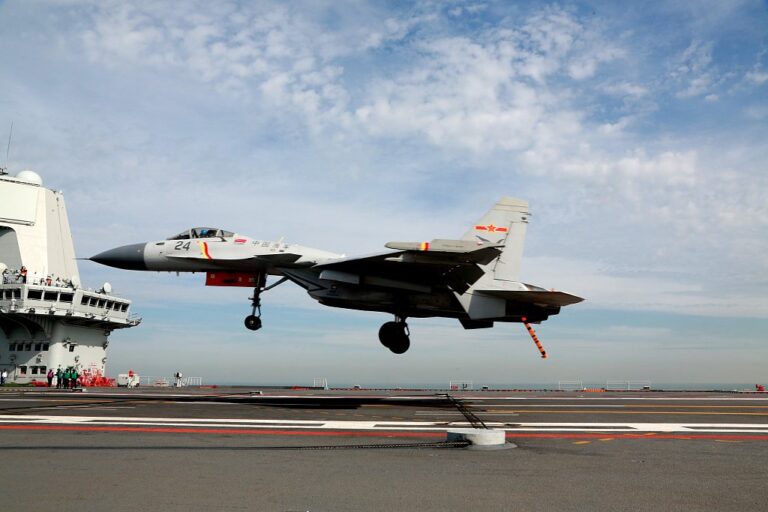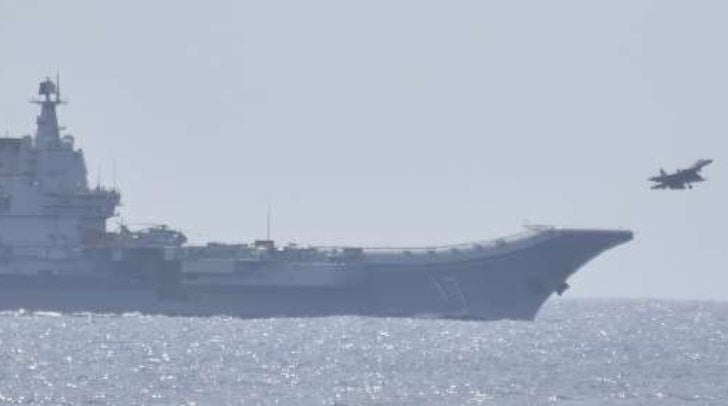Chinese Fighter Jet Has Near Miss With Japanese Surveillance Aircraft
Over the weekend of June 7 and 8th, a Japanese Maritime Self Defense Force P-3C conducting surveillance over the Pacific Ocean was intercepted by Chinese J-15 fighter jets, resulting in two close encounters that the Tokyo Defense Ministry is calling “abnormal approaches”. In two separate instances, Japanese P-3C aircraft came into extremely close proximity with J-15 fighter jets, raising concern with Japanese officials.
The Japanese P-3C Surveillance and Anti-Submarine Warfare (ASW) aircraft was monitoring and following the People’s Liberation Army Navy’s Shandong aircraft carrier as it was about 550km off of Miyakojima, Okinawa on June 7, and later could continue on to north of Okinotorishima, in the Ogasawara Islands on June 9th, within the Japanese EEZ.
In both instances the J-15s were launched from the aircraft carrier that the Japanese were following, and were armed with air to air missiles. In the incident on the 7th, a J-15 flew within 45 meters, or less than 200 feet parallel to the Japanese P-3C. Then, the following day, another J-15 crossed the P-3C’s flight path at a distance of about 900 meters.

Japanese officials raised concern after the incident, with one spokesperson stating; “I do not believe that the approach was due to a mistake by the Chinese military. This unusual approach is a serious act that could lead to an accidental clash.” Japanese officials did not share any potential reasons why the Chinese aircraft are engaging in these maneuvers, but maintained that the JMSDF’s operations to track Chinese naval activities in the region will continue, with another official stating; “The government will continue to communicate with the Chinese side at various levels, and will continue to take all possible measures, such as vigilance and surveillance activities in the sea and airspace around our country, in order to resolutely defend our country’s territory, territorial waters, and airspace”.
This is not the first time Chinese military aircraft have engaged in these kinds of approaches and maneuvers around other aircraft, with a previous three such similar incidents happening with other Japanese Self Defense Force aircraft since 2014, along with another similar incident in 2022 with a United States Air Force aircraft, as well as another incident in February of this year with a Chinese military helicopter and a Philippine government plane. Concerns on the safety of this practice continue to mount as they become more and more frequent around the already heavily contested South China Sea.
These latest two incidents occurred as the Chinese aircraft carrier Shandong was spotted conducting simultaneous operations with its sister ship Liaoning for the first time. Beijing did confirm that the two carriers were in the region to “test the forces capabilities in far seas defense and joint operations”, according to Chinese Navy captain Wang Xuemeng, adding that the exercises were “routine training” and were not targeted. Chinese Foreign Ministry spokesperson Lin Jian would defend the conduct of the aerial maneuvers, stating; “China’s activities in relevant sea and airspace are fully in accordance with international law and international practice”, as well as adding, “What I want to emphasize is that close reconnaissance by Japanese vessels and aircraft against China’s conventional military activities is the fundamental cause of maritime and air security risks. We strongly urge Japan to stop its dangerous actions.”

